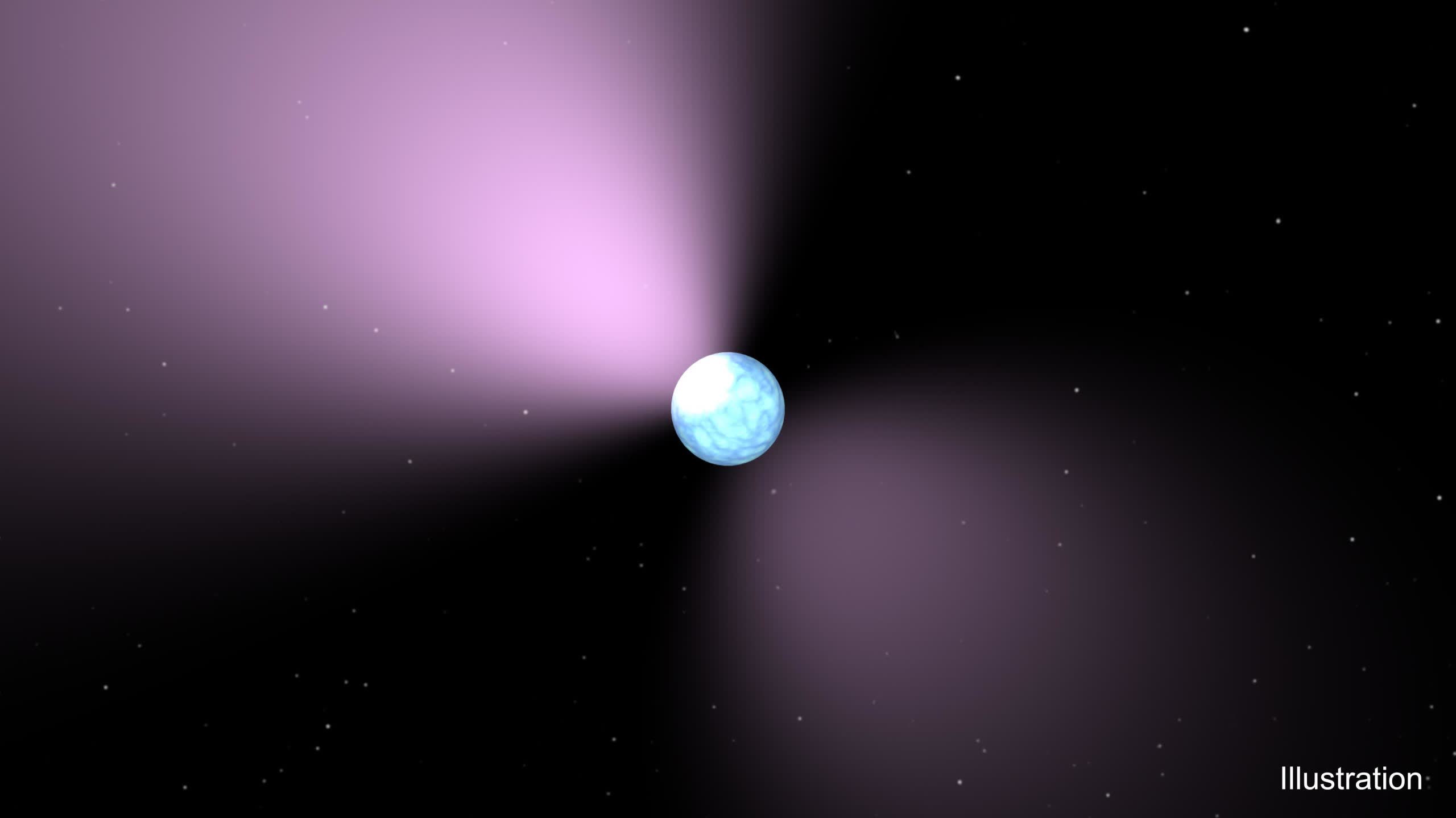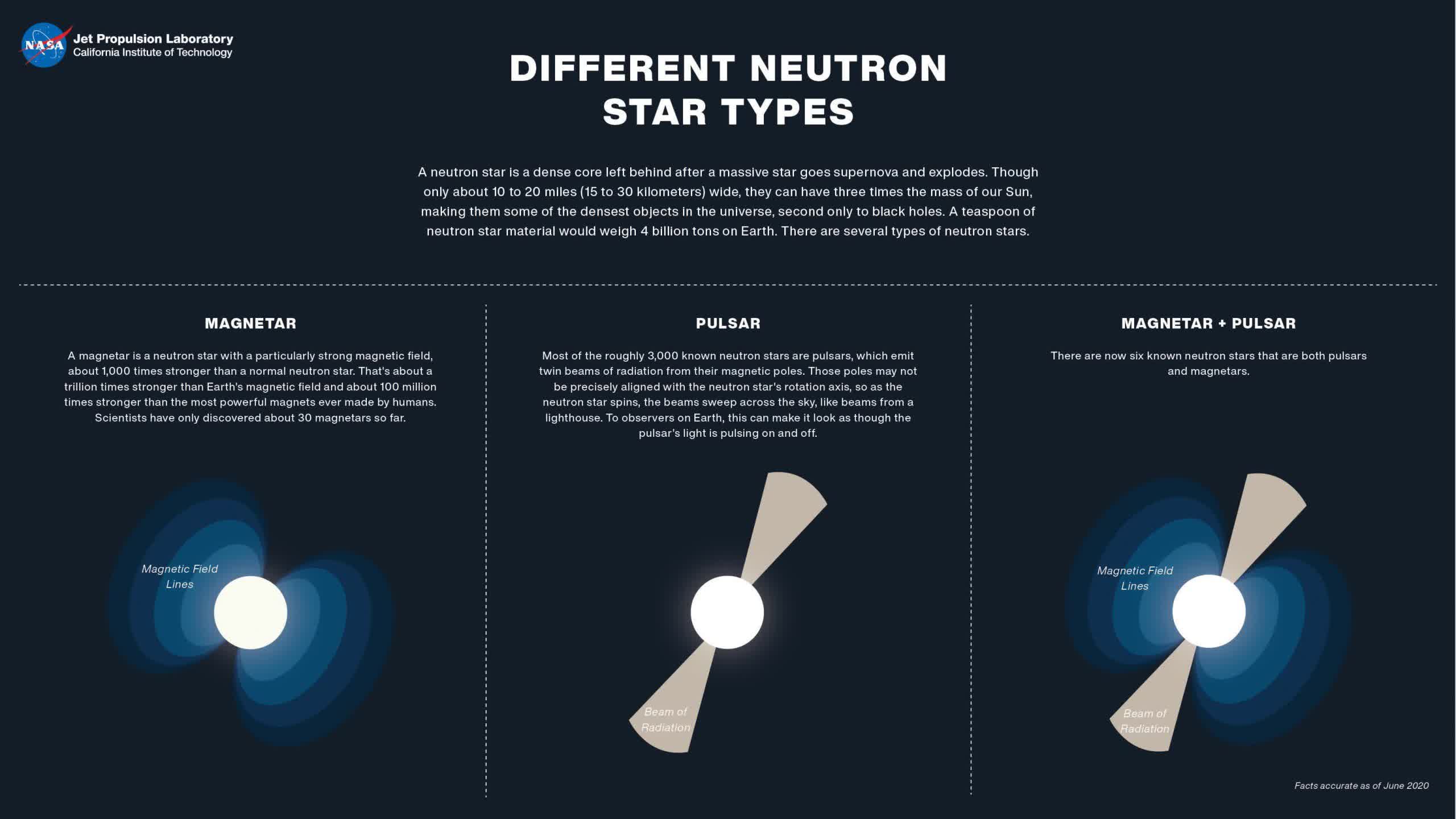Through the looking glass: Astronomers constantly make discoveries that push the boundaries of our current understanding of the cosmos. However, sometimes they encounter objects that defy all explanation, like a radio signal that resembles a pulsar but differs from all known examples in key ways, and maybe something else entirely.

A recently published study describes an odd semi-regular radio signal that has been observable from Earth for at least 35 years. Its properties are similar to some of the most extreme objects in the known universe, but it doesn't match perfectly with any of them.
Scientists noticed the object, named GPM J1839-10, when observing the galactic plane for transient signals – radio sources that briefly appear and disappear. One of the most commonly known types is a kind of neutron star called a pulsar, one of the most violent dead stars known to science.
Click to enlarge
A neutron star is created when fusion reactions cease at the center of an extremely massive star, causing it to collapse under its own weight into an object roughly the size of a city but millions of times heavier than a planet, its density sitting right on the borderline of collapsing into a black hole. They tend to emit tremendously powerful radio wave beams from their magnetic poles, which appear to rapidly blink or "pulse" when viewed from Earth due to the star's extremely rapid rotation, thus the word pulsar.
However, GPM J1839-10's rhythm is far slower. Its signal appears to repeat roughly every 22 minutes, each burst lasting between 30 seconds and five minutes. Normal pulsars can spin hundreds of times per second.
Also notable is that this source's pattern has appeared consistently in radio archives dating back at least to 1988, having mostly eluded analysis since then. Papers mentioning GPM J1839-10 in 2020 and in January of this year suggest that it could be an extremely rare kind of magnetar with an ultra-long pulse period. Magnetars are another type of neutron star that emit the most powerful kind of magnetic field in the universe – 1,000 times stronger than a typical neutron star and a trillion times more powerful than the Earth's magnetic field.
Whatever the object is, it could significantly affect our current understanding of the latest stages of stellar life cycles.
https://www.techspot.com/news/99482-strange-object-space-has-blinking-roughly-once-every.html
